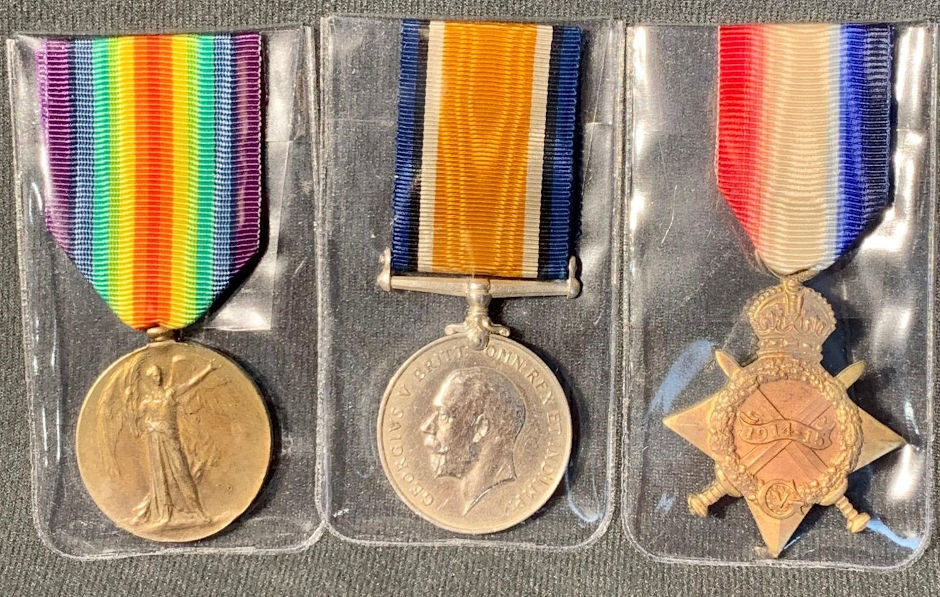
With more than a century having passed since the end of the Great War in 1918, there has never been a better time to collect WW1 propaganda posters. Add to that the celebrations for the 75th anniversary of D-Day which occurred last year, and it is easy to see why this is the perfect time to source the best posters from WW2 as well.
But why exactly is militaria of this kind so popular? To answer this, we need to look at the historical context of the wars. At the outset of The Great War in 1914, television had yet to be invented and very few households owned a radio. The poster was therefore used as a means of communication and was used to inform, inspire and persuade the general public. As examples of social history, WW1 propaganda posters today are a valuable historical resource which offer huge potential for the collector.
Artistically too, propaganda posters are exciting for collectors; some were designed by famous names such as Baden Powell, the founder of the Scouting movement, and the artist Frank Brangwyn who served an apprenticeship with William Morris, while others were text-based posters, setting out important legislation that may not have reached everyone.
The choice of subject for the collector of WW1 propaganda posters is varied, as they fell broadly into four categories - enlistment and recruitment, food, war bonds and funds, and the role of women – each of which has appeal to many types of collector.
By the time of the Second World War, poster propaganda was again used to influence the population in the war effort and, in Britain, the World War 1 Ministry of Information was re-created. As with WW1 posters, the posters of the second war were divided into campaigns, based around the themes of food, clothing, staying safe, and recycling, thus offering choice and flexibility to today’s collectors.
For the collector of vintage art or commentaries on social history, WW2 propaganda posters are a great investment to make and there can be crossover areas with other types of collectors. For example railwayana enthusiasts will be enchanted by the series of WW2 propaganda posters that were designed for London Transport, that featured ‘Billy Brown of London Town’, a cartoon character drawn by David Langdon, whose appearance was that of a City of London businessman wearing a bowler hat and pinstripe suit, and carrying an umbrella.
If we cross the Atlantic when looking at WW1 and WW2 posters, we can see the difference between the British posters and their US counterparts, and the appeal therein for yet more collectors. In WW1, the American posters were less persuasive and rallying than truthful, which meant they were less popular with the public. During WW2, however, the US created the Writers War Board and the United States Office of War Information and over 200,000 poster designs were created. With similar themes to their British equivalents, American WW2 posters were mainly positive with a focus on supporting the war effort, victory gardens and women’s power. By far the largest theme in US propaganda posters was conservation. With one in seven posters carrying this theme, this represents a huge potential for collectors.
Common threads on both sides of the Atlantic included the ‘Careless talk costs lives’ and ‘Loose lips sink ships’ campaigns, which warned against ‘unguarded talk’. Early posters feature artwork by Fougasse (Cyril Bird), a comic artist, depicting people letting information slip in everyday situations. A famous example is bus passengers chatting while being oblivious to the caricatures of Hitler, Goebbels and Goering sitting behind them.
When searching for WW1 and WW2 posters, the condition and rarity contribute to the value. With many wartime posters being produced in large numbers, vintage war posters can be more affordable and are a great starting point for the beginner collector. For the novice who is undecided as to which type of poster to collect, the breadth of theme again makes this the ideal collectable.
Whether your interest lies in social history, caricature, design from a particular era, conservation or the women’s movement, the appeal of WW1 and WW2 propaganda posters is extensive. For novice and experienced collectors alike, Hemswell Antique Centres, being situated on a former RAF base, make the perfect backdrop for all militaria. Many of our visitors travel from overseas to visit and spend entire days browsing our collections, offering our resident collectors an audience which is already invested in our militaria.